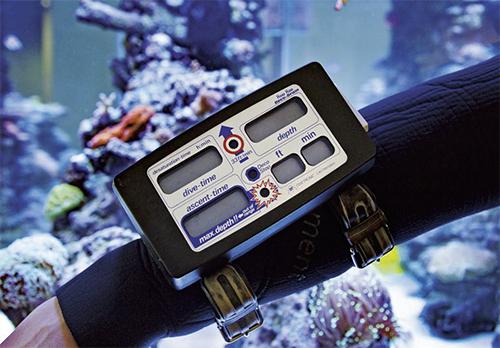How Old Is Too Old
Replacing dive computers and BCDs
Everyone loves the smell of a new car, but eventually, the car develops problems, and you realise current models have new safety features. Dive gear such as dive computers and BCDs get old, too. When should we consider replacing them?
1. Dive Computers
Divers don’t buy new dive computers every year, so it is not uncommon to see older computers while on dive trips. But just because those models were the best options 15 years ago doesn’t mean they’re ideal to use now. New technology has improved computer processing power, battery life, sensor sensitivity and display screens.
Older dive computers are often not able to fully implement some decompression algorithms; modern computers are more powerful and in many cases are better able to compute a more faithful rendition of the underlying algorithm. Modern sensors can detect even slight changes in pressure and register changes in water temperature in a tenth of the time it takes older dive computers. This improvement provides more accurate estimates of water temperature, depth and ascent rate, although the dive computer’s physical design can affect these measurements — and measuring depth to the nearest inch of seawater may not have any practical impact on safety.
Many manufacturers will factory test dive computers for accuracy, so DAN® recommends that divers contact the manufacturer of any dive computer that is 10 years old or older or that has made 1,000 or more dives and ask if it should be tested for accuracy. Years of diving can take their toll on computers in terms of wear and tear, exposure to sun and saltwater, being dropped and other neglect.
As our dive computers steadily age, so do we. Many newer dive computers have sharper screens that are brighter, have larger numbers and are more intuitive to use than older models — worthwhile reasons to add a new dive computer to our wish list.

2. Buoyancy Compensator Devices (BCDs)
A comfortable and good-fitting BCD can give us years of reliable service. Do a few scuff marks or a broken clasp or two signal the end of its usefulness? Does a BCD have an expiration date?
We rely on our BCD to ensure we have both a comfortable and a safe dive; a BCD failure could have very dire consequences when we most need to control our buoyancy, so we need to monitor the BCD’s condition as well as its age. In general, we might provide a cursory inspection of our BCD before and perhaps after use, but rarely do we consider getting them serviced.
Before using your BCD, especially when using it for the first time in many months, inspect the condition of the inflator hose, check the materials for degradation, fully inflate and inspect the seams for leaks and dump valves for function, and look for any significant scuffing or tearing. The inflator and dump valves need to be periodically serviced, especially as the BCD ages. Annual inspections are a good standard of practice, especially for BCDs in use for five years or more.
While BCDs don’t have an explicit shelf life, it is important to carefully and regularly monitor their condition. If the hose is sound with no signs of cracking, there are no leaks, buoyancy control is good and you service the inflator and dump valves annually after the first five years of use, then you should still have a reliable BCD. A good service technician will alert you of any embrittlement of the plastic parts, cracks in the hoses or excessive wear and tear. Keep an eye out for leaks and cracks, especially if your BCD is more than 10 years old. If fashion or function doesn’t prompt you to retire your old BCD, just be sure you stay alert for any warning signs that its functionality, and thus your safety, may be compromised.
For more Diving Health & Safety information visit ‘Diving Safety’ at DANAP
Article Written By Francois Burman, Pr. Eng, MSc., and Peter Buzzacott, Ph.D., MPH
Photo Credit: Stephen Frink
For more DAN articles try









